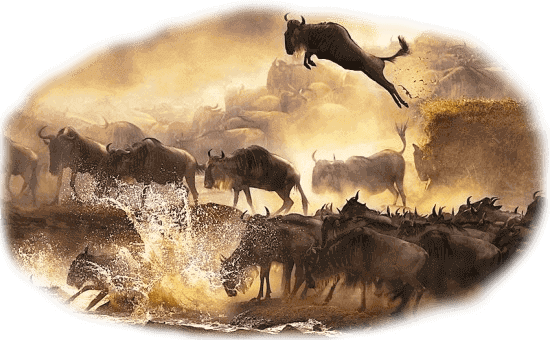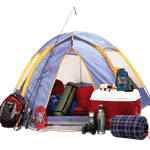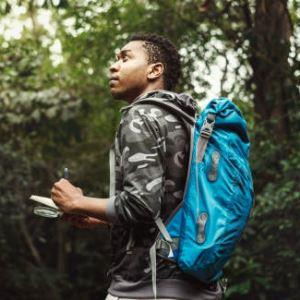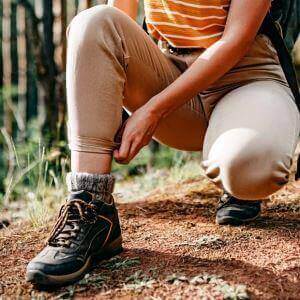 Kenya is one of the few countries where travelers can still see all of the Big Five lion, leopard, elephant, rhino, and buffalo in their natural environment. For UK tourists, the allure of spotting these iconic animals amid Kenya’s vast landscapes is both thrilling and accessible. With direct flights from London to Nairobi and an ever-growing selection of safari packages, planning a trip has never been easier. But knowing when and where to go is key to maximizing your wildlife encounters. The best time to see the Big Five is during the dry seasons: June to October and January to February. These months offer clearer skies, thinner vegetation, and more predictable animal movements as wildlife congregates around remaining water sources. It’s also the time when the Great Wildebeest Migration flows through the Maasai Mara, bringing predators and prey together in one of nature’s grandest displays. The Maasai Mara National Reserve is top of the list for most UK tourists, and for good reason. It not only boasts a high density of lions, elephants, and buffalo but also provides a good chance to see leopards and rhinos. For those seeking a less-traveled but equally rewarding experience, Laikipia’s conservancies such as Ol Pejeta offer crowd-free safaris and excellent opportunities for rhino sightings. Amboseli is famous for its elephant herds and stunning views of Mount Kilimanjaro, while Lake Nakuru is a reliable location for spotting both black and white rhinos. Weather and terrain also influence the travel experience. During the rainy seasons March to May and November the landscape becomes lush but muddy, and some roads may become impassable. That said, fewer tourists during these times mean more private viewing experiences and better accommodation deals. We offer personalized and well-paced itineraries tailored for UK travelers. Their understanding of the terrain and animal patterns ensures your chances of seeing the Big Five are maximized, without making the journey feel rushed or overly commercial. Kenya delivers exceptional Big Five sightings year-round, but timing your visit with the dry season significantly improves your odds. Whether you're a first-timer or a seasoned safari-goer, planning wisely ensures that your journey through Kenya's wilderness will be as enriching as it is unforgettable.
Kenya is one of the few countries where travelers can still see all of the Big Five lion, leopard, elephant, rhino, and buffalo in their natural environment. For UK tourists, the allure of spotting these iconic animals amid Kenya’s vast landscapes is both thrilling and accessible. With direct flights from London to Nairobi and an ever-growing selection of safari packages, planning a trip has never been easier. But knowing when and where to go is key to maximizing your wildlife encounters. The best time to see the Big Five is during the dry seasons: June to October and January to February. These months offer clearer skies, thinner vegetation, and more predictable animal movements as wildlife congregates around remaining water sources. It’s also the time when the Great Wildebeest Migration flows through the Maasai Mara, bringing predators and prey together in one of nature’s grandest displays. The Maasai Mara National Reserve is top of the list for most UK tourists, and for good reason. It not only boasts a high density of lions, elephants, and buffalo but also provides a good chance to see leopards and rhinos. For those seeking a less-traveled but equally rewarding experience, Laikipia’s conservancies such as Ol Pejeta offer crowd-free safaris and excellent opportunities for rhino sightings. Amboseli is famous for its elephant herds and stunning views of Mount Kilimanjaro, while Lake Nakuru is a reliable location for spotting both black and white rhinos. Weather and terrain also influence the travel experience. During the rainy seasons March to May and November the landscape becomes lush but muddy, and some roads may become impassable. That said, fewer tourists during these times mean more private viewing experiences and better accommodation deals. We offer personalized and well-paced itineraries tailored for UK travelers. Their understanding of the terrain and animal patterns ensures your chances of seeing the Big Five are maximized, without making the journey feel rushed or overly commercial. Kenya delivers exceptional Big Five sightings year-round, but timing your visit with the dry season significantly improves your odds. Whether you're a first-timer or a seasoned safari-goer, planning wisely ensures that your journey through Kenya's wilderness will be as enriching as it is unforgettable.
Best Big Five Safari Locations and Sightings Probability
| National Park/Reserve | Big Five Present | Best Months to Visit | Likelihood of Full Big Five Sighting | Recommended Duration |
|---|---|---|---|---|
| Maasai Mara | Yes | Jul–Oct | Very High | 3–5 days |
| Amboseli | Yes | Jun–Oct, Jan–Feb | High (except rhino) | 2–3 days |
| Tsavo East & West | Yes | Jun–Oct | Moderate | 2–4 days |
| Lake Nakuru | Yes | Year-round | High for rhinos | 1–2 days |
| Laikipia (Ol Pejeta) | Yes | Year-round | Very High | 2–3 days |
Best Time of Year to See the Big Five in Kenya
Kenya’s reputation as a premier wildlife destination is built on its consistent and rewarding safari experiences, particularly for those hoping to see the Big Five: lion, leopard, elephant, rhino, and buffalo. For UK tourists, choosing the right time to visit makes all the difference in turning a good safari into an unforgettable one. The best time of year to visit Kenya is during the dry seasons, which span from June to October and from January to February. These months are ideal for game viewing because the animals are more visible. As water sources dry up, wildlife tends to cluster around remaining rivers and waterholes, increasing the chances of sightings. During this time, the vegetation thins, making it easier to spot elusive animals such as leopards and rhinos. Notably, the annual Great Migration takes place in the Maasai Mara between July and October. This epic movement of wildebeest and zebras attracts predators and creates unparalleled drama on the savannah, offering a front-row seat to nature’s raw spectacle. UK travelers during these months can expect not only to see all Big Five species but also to witness unique behaviors and interactions rarely seen elsewhere. The shorter dry season in January and February also brings optimal viewing conditions. While smaller in scale compared to the migration period, this window still offers superb opportunities to see the Big Five, with fewer crowds and generally lower accommodation rates. Although Kenya remains a viable safari destination throughout the year, the rainy seasons March to May and again in November present different challenges. The landscape is lush and vibrant, but muddy roads and thick bush can hinder movement and visibility. However, this is also a time when birdwatching is exceptional, and many parks are quieter, creating a more intimate experience for those willing to embrace the rain. For UK tourists seeking to optimize their experience, planning travel around these dry periods is strongly recommended. It ensures not only better wildlife sightings but also more comfortable travel conditions. By aligning your trip with the best wildlife windows, you maximize the value of your safari adventure. Travelers who rely on expert-guided planning and benefit from local insight and a thoughtful approach to timing. These well-organized journeys prioritize animal encounters without making the experience feel rushed or overly commercial. With good timing, a sense of adventure, and the right guidance, spotting the Big Five in Kenya becomes not just a possibility, but a memorable reality.
Top National Parks in Kenya for UK Travelers to Spot the Big Five
Kenya's diverse landscape is home to some of the most iconic wildlife viewing areas in Africa. For UK tourists seeking to spot the Big Five, choosing the right national park can elevate a standard safari into a life-changing adventure. Each park offers unique terrain, wildlife densities, and experiences suited to different types of travelers, from first-timers to seasoned explorers. Below are some of the top destinations where Big Five sightings are highly probable, along with what makes each location distinctive.
- Maasai Mara National Reserve: Often considered the crown jewel of Kenya’s safari circuit, the Maasai Mara is renowned for its dense populations of predators and large mammals. Visitors are almost guaranteed to see lions, elephants, and buffalo here, and with luck, leopards and rhinos too. The landscape of open savannahs makes it easy to spot wildlife, and during the July to October migration, the spectacle is unmatched.
- Amboseli National Park: Set against the majestic backdrop of Mount Kilimanjaro, Amboseli is famous for its large elephant herds that roam freely across the plains. Lions and buffalo are also frequently sighted, making it a strong contender for those aiming to see most of the Big Five. The park's clear vistas and swamps provide excellent opportunities for close-range animal photography.
- Tsavo East & West National Parks: These two vast parks make up one of Kenya’s largest protected wildernesses. Tsavo East is famous for its red-dust elephants and the striking Yatta Plateau, while Tsavo West offers rugged terrain and rich biodiversity. Sightings of black rhinos, lions, and large elephant groups are common, especially near water bodies like Aruba Dam and Mzima Springs.
- Lake Nakuru National Park: Although smaller in size, this park is a hotspot for rhino conservation. It offers one of the best chances to see both black and white rhinos in a single game drive. Other animals, including lions and buffalo, are present, and the park’s location makes it easily accessible from Nairobi.
- Laikipia Plateau: This region is known for its exclusive private conservancies like Lewa and Ol Pejeta. These areas emphasize low-impact tourism and high-quality experiences. Not only do they host the full Big Five, but they also offer activities such as walking safaris and night drives that are not allowed in many public parks. The intimate setting and excellent conservation practices make Laikipia a preferred choice for discerning travelers.
Each of these destinations contributes something unique to the safari experience. Choosing a combination of two or more ensures varied landscapes, wildlife densities, and viewing styles, making for a more comprehensive and rewarding journey through Kenya's wild heart.
How to Plan a Big Five Safari from the UK
Planning a Big Five safari from the UK to Kenya begins with identifying your travel goals and aligning them with Kenya's peak wildlife seasons. Start by deciding when to travel; the best periods for spotting the Big Five are during the dry seasons, from June to October and January to February. These months provide optimal game-viewing conditions, with sparse vegetation and concentrated animal activity around water sources. Once your dates are set, book flights early. Direct flights from London to Nairobi are available with airlines like British Airways and Kenya Airways, with a journey time of just over eight hours. Nairobi acts as the main safari gateway, offering onward connections to parks and reserves across the country. From here, your safari itinerary can begin. Next, choose a reputable safari operator. We design tailored itineraries that suit various budgets and travel preferences. UK tourists benefit from working with operators that understand both the local terrain and international expectations. Whether you prefer luxury lodges, mid-range camps, or budget-friendly group tours, planning with a trusted provider ensures smooth logistics and better wildlife experiences. Health and documentation should be addressed early. Apply for Kenya’s electronic visa online, a simple process that typically takes a few days. Ensure your passport has at least six months’ validity. Consult your doctor regarding recommended vaccines such as yellow fever and hepatitis A, and consider taking anti-malarial medication. Also, invest in comprehensive travel insurance that includes coverage for medical evacuation, especially when venturing into remote areas. Packing smart is essential. UK tourists should bring neutral-coloured, lightweight clothing suitable for warm days and cool nights. Add good binoculars, insect repellent, sunscreen, and a universal power adapter. Remember to include your travel documents, printed itineraries, and emergency contact details. Decide what kind of experience you want. For first-time travelers, the Maasai Mara offers high Big Five success rates and dramatic landscapes. Those returning for a deeper experience may prefer the private conservancies of Laikipia or the elephant-rich plains of Amboseli. Varying your destinations improves wildlife diversity and allows for different types of safaris, from game drives to bush walks. Planning a Big Five safari from the UK is entirely achievable with the right preparation. Thoughtful timing, expert guidance, and clear logistics come together to create a journey that is not only thrilling but also deeply fulfilling. By focusing on quality experiences over quantity, UK tourists can enjoy Kenya’s incredible wildlife in comfort and confidence.
What UK Tourists Should Pack for a Kenyan Safari
Preparing for a safari in Kenya involves more than booking flights and accommodation; packing the right gear ensures you stay safe, comfortable, and fully immersed in the experience. Kenya’s climate, terrain, and wildlife demands can catch first-time travelers off guard if they aren’t adequately prepared. For UK tourists, the goal is to strike a balance between practicality and preparedness without overpacking. Below are essential items to include, along with reasons why they matter in the Kenyan wilderness.
- Neutral-coloured clothing: Safari animals are sensitive to color. Bright or dark hues can either attract insects or make you more visible to animals. Opt for beige, khaki, or olive green tones to blend into your surroundings and stay cool in the sun. Light layers are also advisable due to the temperature shifts between morning game drives and midday heat.
- Binoculars: Wildlife is not always close to the vehicle. A good pair of binoculars significantly enhances your safari experience by bringing distant animals into sharp focus. They’re especially helpful for spotting elusive species like leopards or birds in thick foliage.
- Sunscreen and insect repellent: Kenya’s equatorial sun can be intense, even during cooler months. High-SPF sunscreen protects against sunburn, while a strong insect repellent (preferably with DEET) wards off mosquitoes and tsetse flies, reducing your risk of bites and malaria.
- Comfortable walking shoes: While most game drives are done in vehicles, many lodges and parks offer walking safaris or nature walks. Sturdy, breathable shoes provide support and prevent injury on rough or uneven terrain.
- Light rain jacket: Kenya's weather can change quickly, particularly during the shoulder seasons (March and November). A lightweight waterproof jacket is essential to stay dry and warm during sudden showers.
- Power bank and universal plug adapter: Camps and lodges may have limited or timed electricity access. A power bank ensures your phone or camera stays charged for capturing special moments. A Type G adapter is needed to plug into the British-style sockets used in Kenya.
- Travel documents: Always carry a printed copy of your passport, eVisa, travel insurance, and confirmed bookings. Having these documents organized and accessible can save time during check-ins and border crossings.
By packing thoughtfully, UK tourists ensure they are well-prepared for varying weather, wildlife encounters, and travel conditions. These essentials not only protect your health and belongings but also allow you to focus on the thrill of spotting Kenya’s incredible wildlife.
Affordable Safari Packages for UK Tourists in Kenya
 A safari in Kenya is often perceived as a luxury experience, but it doesn’t have to be financially out of reach. For UK tourists seeking authentic wildlife adventures without breaking the bank, there are a range of affordable safari packages that combine comfort, safety, and unforgettable wildlife encounters. With careful planning and the right travel partners, you can enjoy a fulfilling Big Five safari at a fraction of the premium cost. The key to affordability is flexibility. Traveling during the shoulder seasons March to May and November can significantly reduce the overall cost of your safari. During these months, park entry fees, accommodations, and flight prices tend to drop due to lower demand. While these periods may see some rainfall, the wildlife is still active, the landscapes are lush, and the parks are far less crowded, enhancing the sense of exclusivity. Another cost-effective strategy is to choose shorter itineraries that focus on parks with a high concentration of Big Five animals, such as the Maasai Mara, Lake Nakuru, or Ol Pejeta Conservancy. These destinations offer efficient game viewing, meaning you can experience more in less time. For example, a three-day trip to the Maasai Mara can yield multiple Big Five sightings while keeping costs manageable. Group tours are another excellent option for budget-conscious UK travelers. Sharing transport and guides with a small group significantly reduces individual expenses while still maintaining a quality experience. We offer thoughtfully curated group and private packages that ensure value without compromising on the essence of the safari. Budget accommodations play a crucial role as well. Instead of luxury lodges, consider mid-range tented camps or eco-camps that provide comfort, meals, and proximity to game drive areas. Many of these camps have excellent guides and blend seamlessly into their natural surroundings, giving you an authentic safari feel without the premium price tag. When booking, ensure the package includes essentials like park fees, transportation, meals, and guided game drives. Hidden costs can quickly add up, so transparent pricing is a must. At Homejoy Safari Adventures, packages are structured to be inclusive and flexible, allowing travelers to focus on the experience rather than worrying about logistics. Affordable does not mean basic. With the right approach, UK tourists can enjoy well-planned safaris that feature experienced guides, prime wildlife locations, and rich cultural encounters. Kenya’s national parks and conservancies are accessible to more travelers than ever, offering budget-friendly ways to witness one of the world's greatest natural spectacles.
A safari in Kenya is often perceived as a luxury experience, but it doesn’t have to be financially out of reach. For UK tourists seeking authentic wildlife adventures without breaking the bank, there are a range of affordable safari packages that combine comfort, safety, and unforgettable wildlife encounters. With careful planning and the right travel partners, you can enjoy a fulfilling Big Five safari at a fraction of the premium cost. The key to affordability is flexibility. Traveling during the shoulder seasons March to May and November can significantly reduce the overall cost of your safari. During these months, park entry fees, accommodations, and flight prices tend to drop due to lower demand. While these periods may see some rainfall, the wildlife is still active, the landscapes are lush, and the parks are far less crowded, enhancing the sense of exclusivity. Another cost-effective strategy is to choose shorter itineraries that focus on parks with a high concentration of Big Five animals, such as the Maasai Mara, Lake Nakuru, or Ol Pejeta Conservancy. These destinations offer efficient game viewing, meaning you can experience more in less time. For example, a three-day trip to the Maasai Mara can yield multiple Big Five sightings while keeping costs manageable. Group tours are another excellent option for budget-conscious UK travelers. Sharing transport and guides with a small group significantly reduces individual expenses while still maintaining a quality experience. We offer thoughtfully curated group and private packages that ensure value without compromising on the essence of the safari. Budget accommodations play a crucial role as well. Instead of luxury lodges, consider mid-range tented camps or eco-camps that provide comfort, meals, and proximity to game drive areas. Many of these camps have excellent guides and blend seamlessly into their natural surroundings, giving you an authentic safari feel without the premium price tag. When booking, ensure the package includes essentials like park fees, transportation, meals, and guided game drives. Hidden costs can quickly add up, so transparent pricing is a must. At Homejoy Safari Adventures, packages are structured to be inclusive and flexible, allowing travelers to focus on the experience rather than worrying about logistics. Affordable does not mean basic. With the right approach, UK tourists can enjoy well-planned safaris that feature experienced guides, prime wildlife locations, and rich cultural encounters. Kenya’s national parks and conservancies are accessible to more travelers than ever, offering budget-friendly ways to witness one of the world's greatest natural spectacles.
Where to See Lions in Kenya on a UK Tourist Safari
For many UK tourists, seeing lions in the wild is one of the most anticipated highlights of a Kenyan safari. Lions, known as the kings of the savannah, evoke a sense of wonder and raw beauty that few other animals can match. Kenya offers some of the best lion-viewing experiences in Africa, thanks to its well-managed national parks, expansive conservancies, and thriving lion populations. To maximize your chances of seeing these majestic cats, it helps to know where they are most commonly found and under what conditions sightings are most likely.
- Maasai Mara: This world-renowned reserve is one of the most reliable places to spot lions in Kenya. The Maasai Mara is home to large, well-studied prides that roam the vast grasslands, often visible during game drives. Lions here are accustomed to safari vehicles, making them easier to observe and photograph, especially during the Great Migration when prey is abundant.
- Meru National Park: Quieter than more popular parks, Meru offers a more secluded experience without sacrificing the quality of sightings. Lions are frequently encountered in this rugged landscape, and the park's lower visitor density means longer, uninterrupted viewing opportunities.
- Nairobi National Park: Just a short drive from the city center, this park offers surprisingly strong lion populations. It's one of the few places in the world where you can see lions against a backdrop of a major city skyline. For tourists on limited schedules, this park is a convenient option without compromising on big cat encounters.
- Tsavo West: Famed for its history with the "man-eaters" of Tsavo, this park features a mix of open plains and dense bush, which offers a chance to see more solitary and majestic male lions. The rugged terrain adds a sense of adventure to the lion-tracking experience.
- Laikipia Conservancies: These private conservancies such as Lewa and Ol Pejeta offer intimate, off-the-beaten-path lion tracking experiences. Visitors often explore on foot or in open vehicles with expert guides, enabling closer and more personalized encounters.
Each of these destinations offers something unique, from accessibility and scenery to the style of wildlife viewing. By including one or more of these lion hotspots in your itinerary, you're setting yourself up for memorable, heart-pounding moments on the African plains.
Frequently Asked Questions About Big Five Viewing Safari Tours in Kenya for UK Visitors
Embarking on a Big Five safari in Kenya is a dream for many UK tourists, and with good reason. Kenya offers some of Africa's richest biodiversity and the best chances to witness lions, leopards, elephants, rhinos, and buffalo in the wild. Yet, planning such an adventure raises many questions especially for first-time travelers. Below are eight questions UK tourists frequently ask, each with practical and informative answers to help guide your safari planning.
- When is the best time to go on a Big Five safari in Kenya? The best time to go is during the dry seasons: June to October and January to February. During these months, animals gather around water sources, making them easier to spot. The Great Migration also occurs in the Maasai Mara from July to October, offering unmatched viewing.
- Which Kenyan parks are best for seeing the Big Five? Maasai Mara is the most popular, followed by Amboseli, Tsavo East and West, Lake Nakuru, and Ol Pejeta Conservancy in Laikipia. Each park offers distinct experiences, landscapes, and likelihood of sightings.
- Can I see all of the Big Five in one park? Yes, but it’s rare. The Maasai Mara and Ol Pejeta offer the highest chances of spotting all five. Spreading your visit across two or three parks improves your chances significantly.
- How long should a Big Five safari last? A well-rounded safari should last between 7 and 10 days. This allows enough time to visit multiple parks and increases your likelihood of quality sightings without feeling rushed.
- Is it safe for UK tourists to go on safari in Kenya? Yes. Kenya is generally safe for tourists, especially in wildlife areas and national parks. Choose reputable tour operators, follow local guidelines, and travel with proper insurance.
- What should I wear on a Kenyan safari? Wear neutral-coloured, breathable clothing to stay cool and avoid attracting insects. Layer up for cool mornings and evenings. Comfortable walking shoes, a hat, and sunglasses are also essential.
- Are guided safaris better than self-drive options? Guided safaris are strongly recommended, especially for UK visitors. Guides offer deep knowledge, enhance safety, and increase your chances of finding the Big Five. Self-drive safaris are limited to specific parks and require local familiarity.
- How do I book a safari from the UK? Start by choosing travel dates, then reach out to reliable operator. Look for all-inclusive packages that cover park fees, guides, transport, and accommodation. Booking early ensures better rates and availability.






